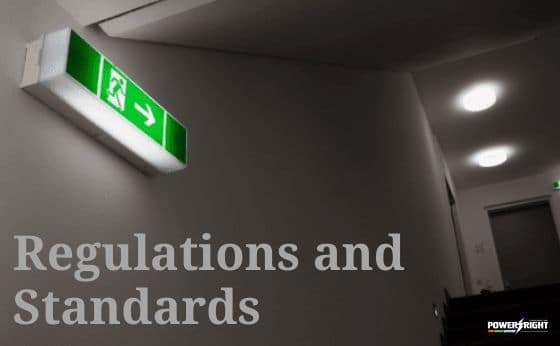
A power outage could occur at the most unexpected moments. This could be due to a fire or a power cut. And when this occurs, there comes the need to have backup lights for this emergency situation. Today, many people use what is called an emergency lighting system. This involves the use of emergency lights designed to come on immediately the power goes out. Without an emergency lighting system, there could be total darkness and this could be dangerous for the occupants of a building.
Emergency lighting systems are generally sub-divided into two major parts: emergency escape lighting and standby lighting.
Emergency escape lighting: This is the part of the emergency lighting system that gives illumination for people leaving a location. It also provides illumination for people that are attempting to stop a process with high risks involved. it is usually fixed with the exit sign. Emergency escape lighting is further sub-divided into escape route lighting, open area lighting and high-risk task area lighting.
Escape route lighting identifies the escape route which includes the fire exit sign and illuminates its surroundings. Open area lighting, also known as the anti-panic lighting, illuminates the surroundings so that occupants can identify escape routes. High-risk task area lighting, like the name implies, provides illumination for potentially dangerous situations and provides lighting for a proper shut down for the safety of occupants in case of an emergency.
Standby lighting: This is the part of the emergency escape lighting provided to enable normal activities to occur in the building.
To ensure that the emergency lighting fittings remain constantly operational, there is a need for periodical servicing. Emergency lighting testing is usually done on a routine basis. For an emergency lighting system to be tested, the main power has to be switched off so that it is running on battery supply. The test can be done manually or automatically.
Manual testing involves a simulated main failure, by isolating all lighting circuits and other emergency lighting fittings. It is important to note that in a system with one switch, after the simulation, the tester should go around to check if all emergency lighting fittings are working properly. All performances should be logged in the fire safety logbook.
Automatic testing is a more costly emergency lighting testing but a more efficient way of testing. This is used most times when you want to get the system up and running on time. They are self-testing emergency lighting that automatically checks themselves after a period of time.
All maintenance and testing of emergency lighting systems are mandated to be done regularly and should ensure compliance with the I.S 3217: 2013.
The standard from the National Standards Authority of Ireland (NSAI) that deals with the issues of Emergency Lighting are the (I.S. 3217). The emergency lighting system has three major purposes: To illuminate exit routes, to keep communal areas lit and to provide sufficient light for proper shutdown during high-risk processes. Every building owner has an ethical and legal obligation to make sure that the emergency lighting system installed in the building is built, designed and installed according to IS 3217: 2013 standard. And all emergency lighting testing is also done to this standard.
The loss of main electricity can be troublesome, so you always need to take all the necessary safety measures. And this can only be effectively done if you know and understand the regulations and standards. Choose the emergency lighting system that's best for you and follow the proper emergency lighting testing standard so you can have peace of mind that your lighting will work in any case of emergency.